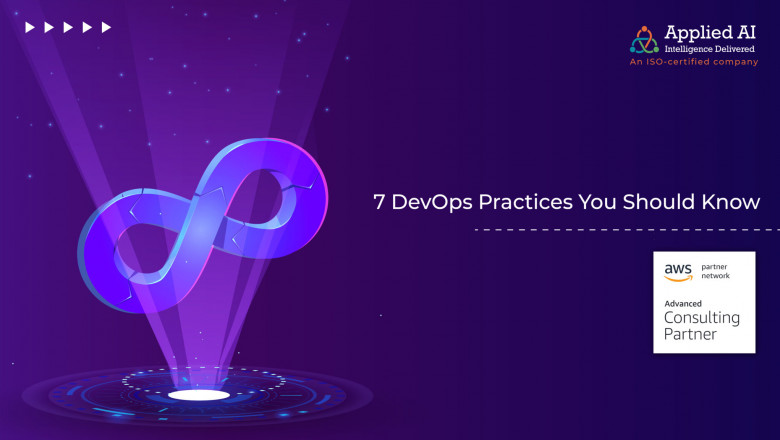Seeing the above lifecycle, you might get the impression that DevOps isn’t an extra step; it simply makes the process continuous.
7 Crucial DevOps Best Practices You Must Know
If you want to build a successful DevOps strategy then you must invest in cultural changes, automated processes, and the right technologies.
Here are the DevOps best practices that we should be aware of:
This practice encourages developers to regularly merge their code changes into a central repository. Then after the automated builds and tests are run. Its goal is to find and fix bugs faster, improve software quality, and reduce the time it takes for new updates to be validated and released.
In this practice, code changes are built, tested, and prepared for production release automatically. As a result, all code changes are deployed to both a testing environment and a production environment once the build stage has been completed.
It is an architectural approach to building applications where pieces of an app work independently, but together. This practice involves building a single application as a set of small services. Each service runs as a separate process and communicates with other services through a lightweight interface, typically an HTTP API.
It’s a practice of provisioning and managing infrastructure using code and software development techniques such as version control and continuous integration. Instead of manually setting up and configuring resources, the cloud’s API-driven model allows developers and system administrators to interact with infrastructure programmatically and at scale.
It is the practice of maintaining the state of the system’s resources such as virtual machines (VM), servers, and databases. Teams can automate and standardize configuration processes by using configuration management tools. It is often used in conjunction with infrastructure as a code to manage configurations.
It is the practice of managing software code in versions. This helps the development team track changes and revisions. That makes it easy for developers to review and recover the code.
Version control is typically implemented using Git, which allows multiple developers to collaborate on code. Each developer works on their copy of the code, and any changes made by any developer are not merged within the master branch until the repository owner approves them.
OnOnef the critical DevOps practices that provide complete visibility into the health and performance of the overall application.
It improves the visibility of a system’s operations, particularly those that can lead to security breaches. With this level of visibility, the DevOps team can set up alerts and work to resolve issues as they arise. Teams can also identify and resolve performance bottlenecks before they cause further potential damage.
While DevOps adoption is essential for organizations today to stay in the competition. But to beat the competition you will need the right DevOps partner.
After helping companies from various industries we are ready to make your DevOps adoption journey successful.
Are you ready to accelerate your time to market through the strategic implementation of automated tools and pipelines?
Reach out at info@appliedaiconsulting.com













